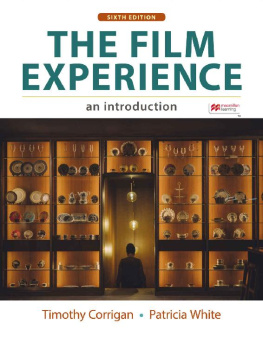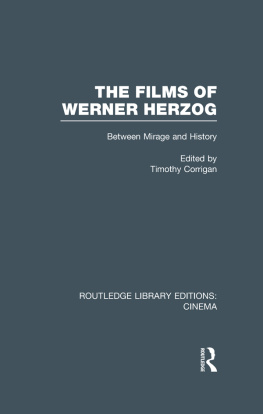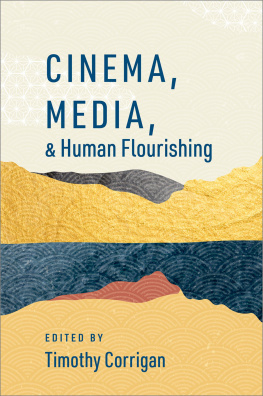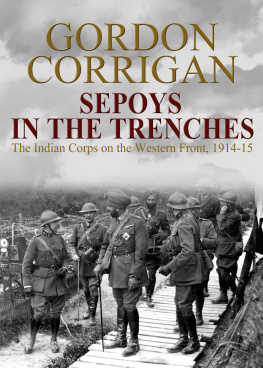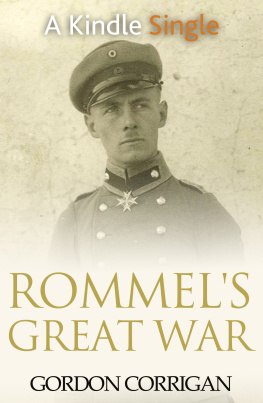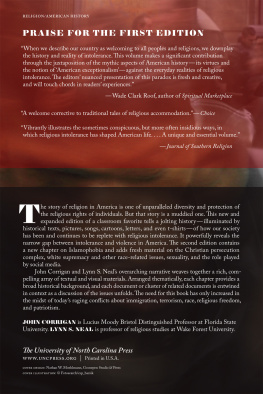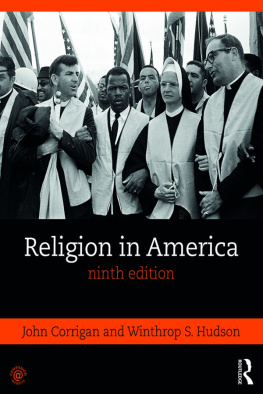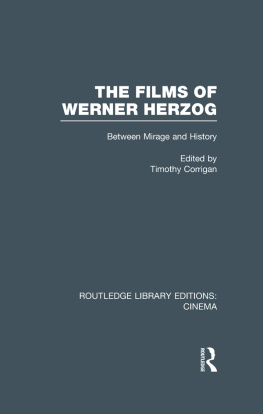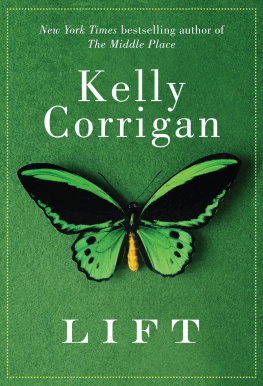Timothy Corrigan - The Film Experience
Here you can read online Timothy Corrigan - The Film Experience full text of the book (entire story) in english for free. Download pdf and epub, get meaning, cover and reviews about this ebook. year: 2020, publisher: Bedford/St. Martins, genre: Home and family. Description of the work, (preface) as well as reviews are available. Best literature library LitArk.com created for fans of good reading and offers a wide selection of genres:
Romance novel
Science fiction
Adventure
Detective
Science
History
Home and family
Prose
Art
Politics
Computer
Non-fiction
Religion
Business
Children
Humor
Choose a favorite category and find really read worthwhile books. Enjoy immersion in the world of imagination, feel the emotions of the characters or learn something new for yourself, make an fascinating discovery.
- Book:The Film Experience
- Author:
- Publisher:Bedford/St. Martins
- Genre:
- Year:2020
- Rating:5 / 5
- Favourites:Add to favourites
- Your mark:
- 100
- 1
- 2
- 3
- 4
- 5
The Film Experience: summary, description and annotation
We offer to read an annotation, description, summary or preface (depends on what the author of the book "The Film Experience" wrote himself). If you haven't found the necessary information about the book — write in the comments, we will try to find it.
The Film Experience — read online for free the complete book (whole text) full work
Below is the text of the book, divided by pages. System saving the place of the last page read, allows you to conveniently read the book "The Film Experience" online for free, without having to search again every time where you left off. Put a bookmark, and you can go to the page where you finished reading at any time.
Font size:
Interval:
Bookmark:

The front cover shows the name of the book, the edition, and the logo of Macmillan Learning at the top. Below, the cover photo shows the back view of a man standing at a doorway. In-built shelves on either side and above the door display a range of glasses and crockery. The authors' names are printed below the cover photo.
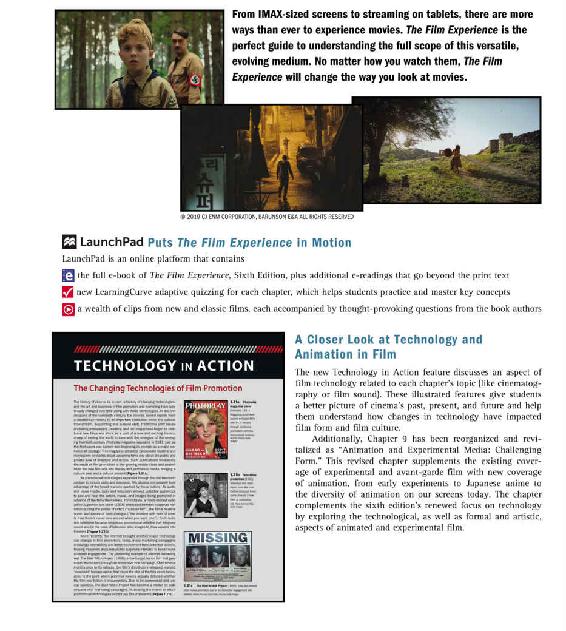
The inside front cover shows three movie stills along with a text in the top portion.
The heading reads, Bring your film experiences to life. The first movie still shows a man in uniform, along with a teenager in a forest. The man wears the Nazi symbol on his uniform. The second movie still shows a man walking down a narrow street with buildings on either side. The third movie still shows a young woman standing on a small hill on a sunny day. The accompanying text reads, From I MAX-sized screens to streaming on tablets, there are more ways than ever to experience movies. The Film Experience is the perfect guide to understanding the full scope of this versatile, evolving medium. No matter how you watch them, The Film Experience will change the way you look at movies. The image credits read, Copyright 2019 C J E N M Corporation, Barunson E and A All Rights Reserved.
Text alongside the logo of LaunchPad reads as follows. LaunchPad Puts The Film Experience in Motion
LaunchPad is an online platform that contains
(An e-book symbol) the full e-book of The Film Experience, Sixth Edition, plus additional e-readings that go beyond the print text
(A checkbox; checked) new LearningCurve adaptive quizzing for each chapter, which helps students practice and master key concepts
(A play button) a wealth of clips from new and classic films, each accompanied by thought-provoking questions from the book authors.
The bottom portion shows a screenshot of a page titled, Technology in Action. The text reads as follows. The Changing Technologies of Film Promotion
The history of cinema is, in part, a history of changing technologies, and the art and business of film promotion and marketing have continually changed over time along with those technologies. In the first decades of the twentieth century, the movies moved rapidly from a vaudevillian novelty to an important institution within the cultural mainstream. Supporting this cultural shift, traditional print media (including newspapers, posters, and fan magazines) began to celebrate new films and stars as a part of a new and exciting literacy, a way of seeing the world in tune with the energies of the emerging twentieth century. Photoplay magazine appeared in 1911, just as the Hollywood star system was beginning to emerge as a major promotional strategy. This magazine attracted passionate readers and moviegoers to stories about upcoming films and about the public and private lives of directors and actors. Such publications broadened the reach of film promotion to the growing middle class and assimilated the new film arts into literary and journalistic media, bridging a cultural past and a cultural present [Figure 1.21a]. Figure 1.21a shows a cover page of Photoplay magazine. The caption reads, Photoplay magazine cover (February 1931). Magazines and newspapers welcomed the new art of cinema through traditional journalistic vehicles. Transcendental Graphics/Archive Photos/Getty Images.
As promotional technologies expanded through the mid-twentieth century to include radio and television, film studios immediately took advantage of the broad markets reached by these outlets. As audio and visual media, radio and television allowed potential audiences to see and hear the actors, music, and images being promoted in advance of the films themselves. For instance, a ninety-second radio ad for Superman the Movie (1978) alternated between voiceover narration quoting the praise of critics (a super hit!), the films musical score, and pieces of lively dialogue (the problem with men of steel is that theres never one around when you want one). Both radio and television became ubiquitous promotional vehicles that integrate sound and (in the case of television ads) images to draw viewers into theaters [Figure 1.21b]. Figure 1.21b shows a photo of Joan Collins, and the caption reads, Television promotion (1960). Television and radio made stars like Joan Collins (pictured here) come alive as a new form of promotion. C B S Photo Archive/C B S/Getty Images.
More recently, the internet brought another major technological change in film promotion. Today, many marketing campaigns encourage interactivity and direct involvement from potential viewers, teasing mysteries and unexpected surprises intended to boost word of-mouth engagement. The pioneering example of internet marketing was The Blair Witch Project (1999), a low-budget horror film that generated excitement through an immersive viral campaign. Over several months prior to its release, the films distributors released realistic newsreel footage online that made the plot of the film seem believable, to the point where potential viewers actually debated whether the film was fiction or documentary. Due to its commercial and critical success, The Blair Witch Project has become a model for subsequent viral marketing campaigns, illustrating the extent to which promotional technologies impact our film experience [Figure 1.21c]. Figure 1.21c shows a poster for missing people, and the caption reads, The Blair Witch Project (1999). Today the internet often makes promotion part of an interactive engagement with viewers. William Thomas Cain/Hulton Archive/Getty Images.
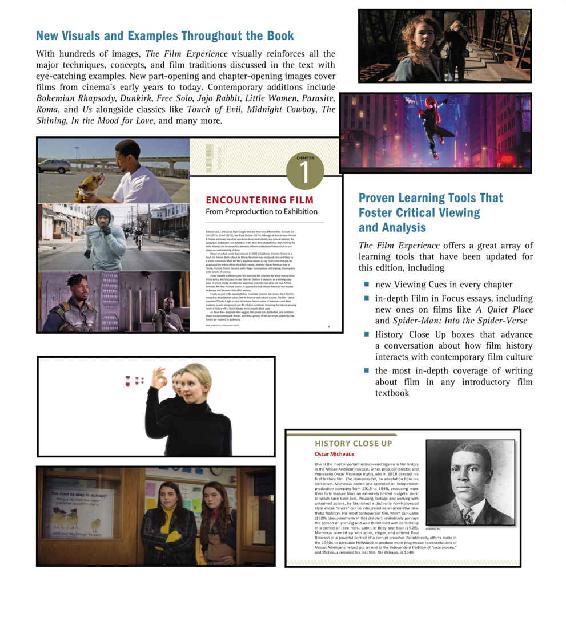
New Visuals and Examples Throughout the Book
With hundreds of images, The Film Experience visually reinforces all the major techniques, concepts, and film traditions discussed in the text with eye-catching examples. New part-opening and chapter-opening images cover films from cinemas early years to today. Contemporary additions include Bohemian Rhapsody, Dunkirk, Free Solo, Jojo Rabbit, Little Women, Parasite, Roma, and Us alongside classics like Touch of Evil, Midnight Cowboy, The Shining, In the Mood for Love, and many more.
Chapter 1
Encountering Film
From Preproduction to Exhibition
Between 2013 and 2018, Ryan Coogler directed three very different films: Fruitvale Station (2013), Creed (2015), and Black Panther (2018). Although all three feature Michael B. Jordan and share important questions about racial identity and cultural violence, the production, distribution, and exhibition of the three films illustrate how films, even by the same director, can be shaped by extremely different institutional histories that in turn shape our understanding of them.
Based on actual events that occurred in 2008 in California, Fruitvale Station is a small but intense drama about an African American man mistakenly shot and killed by a transit policeman. When the films theatrical release in July 2013 coincided with the acquittal of the police officer who killed a young, unarmed African American man in Florida, Fruitvale Station became part of larger conversations, still ongoing, about justice in the streets of America.
Creed traveled a different path. This franchise film inherited the whole history of the Rocky series, which focused on star Sylvester Stallones character as a working-class boxer. In Creed, Rocky, an older and wiser man, trains the son of his old rival. A more formulaic film than Fruitvale Station, it appealed to both African American and broader audiences and became a box-office success.
Next pageFont size:
Interval:
Bookmark:
Similar books «The Film Experience»
Look at similar books to The Film Experience. We have selected literature similar in name and meaning in the hope of providing readers with more options to find new, interesting, not yet read works.
Discussion, reviews of the book The Film Experience and just readers' own opinions. Leave your comments, write what you think about the work, its meaning or the main characters. Specify what exactly you liked and what you didn't like, and why you think so.

